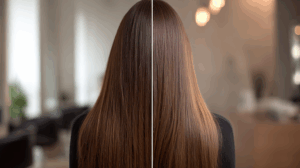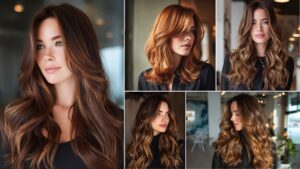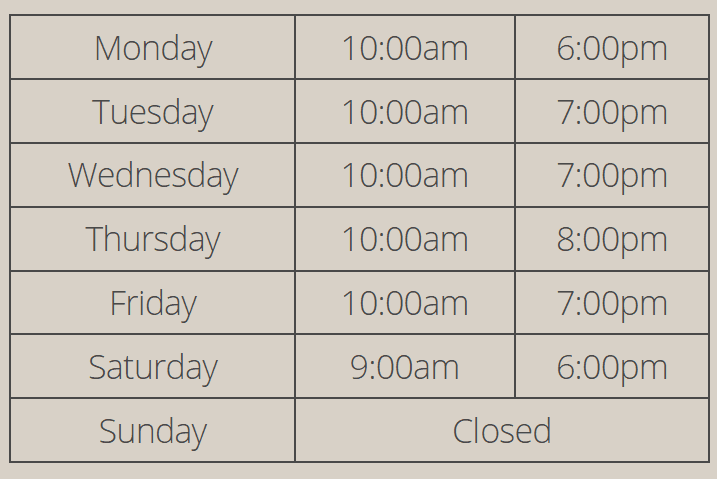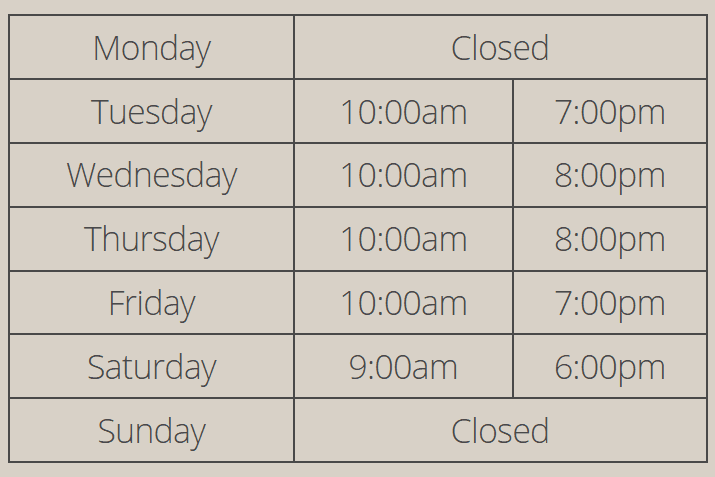Table of Contents
What’s the Difference Between Thin Hair and Fine Hair
When it comes to understanding the difference between thin hair and fine hair, it’s all about the diameter of individual strands. Fine hair refers to the thickness of each strand, while thin hair refers to the density or number of strands on your head.
Fine-haired individuals have strands that are smaller in diameter, often feeling silky and smooth to the touch. On the other hand, thin-haired folks may have fewer strands per square inch on their scalp, leading to a more sparse appearance overall.
For those with fragile hair looking to add volume and fullness, good hair extensions can be a game-changer. Hair extensions for thin hair are specially designed to blend seamlessly with your natural strands without adding unnecessary weight or strain.
Whether you’re seeking individual hair extensions for thin hair for targeted areas or invisible options for thinning spots on top, there are various types of hair extension methods suitable for different needs. By choosing the right type of extension—such as clip-ins, tape-ins, or nano rings—you can achieve natural-looking results that enhance your existing locks without causing damage or discomfort.

Common Causes of Hair Thinning and Fine Texture
Have you ever wondered what causes thinning hair and fine texture? It’s a common concern among many women, especially those looking for the best hair extensions for thin hair to add volume and confidence to their locks.
There are several factors that can contribute to sparse hair, and why some may seek before and after hair extensions for thin hair on top. One common cause of thinning hair is genetics.
If your family members have naturally fine or thin hair, you may have inherited those traits as well. Another factor could be hormonal changes, such as those experienced during pregnancy or menopause, leading to a decrease in hair density.
Additionally, excessive heat styling, harsh chemical treatments, and poor nutrition can weaken the strands, resulting in a finer texture that may benefit from good human hair extensions UK. Finding the best type of hair extensions for your fine hair can be a game-changer in boosting your confidence and achieving thicker-looking locks.
Whether you opt for individual extensions or permanent methods tailored for thinning hair, understanding the root causes of your delicate and sparse strands is key to selecting the right solution. With the proper care and maintenance routine in place, you can enjoy fuller, natural-looking results that blend seamlessly with your own hair.

Can You Safely Wear Hair Extensions with Thin Hair
Thin hair can be a bit delicate and in need of some extra care, so the question arises: Can you safely wear hair extensions with thin hair? The good news is that yes, you can absolutely rock hair extensions even if you have fine or thin hair.
It’s all about choosing the correct type of extensions and application method that won’t cause additional stress to your natural strands. By opting for lightweight and gentle options, such as tape-in or halo extensions, you can achieve a fuller look without compromising the health of your hair.
When it comes to selecting the best hair extensions for thin hair, it’s essential to prioritise quality over quantity. Look for high-quality human hair extensions that are specifically designed for fine strands.
These types of extensions blend seamlessly with your natural hair, creating a flawless look without weighing down your locks. Additionally, be mindful of the attachment method used by your stylist.
Opt for individual micro ring or tape-in extensions that distribute weight evenly and won’t put unnecessary strain on your delicate strands. With the proper care and maintenance routine, you can enjoy fuller, natural-looking hair while keeping your thin tresses healthy and beautiful.

Key Considerations When Selecting Extensions for Thin Hair
When it comes to selecting the best hair extensions for thin hair, there are a few key considerations to keep in mind to achieve that fuller, natural-looking result you desire. Firstly, the weight of the extensions plays a crucial role in ensuring they do not cause further stress or damage to your delicate strands.
Opt for lightweight extensions specifically designed for women with thin hair, such as tape-in or nano ring extensions. These options provide volume without weighing down your natural hair, helping you achieve a seamless blend.
Another important factor to consider is the attachment method of the hair pieces for thinning hair. For thin hair, it’s best to choose non-damaging methods that won’t put additional strain on your already fragile strands.
Invisible tape and skin wefts are excellent choices as they lay flat against the scalp, minimising tension and reducing the risk of damaging hair after extensions are taken out. By selecting extensions that are gentle on fine hair, you can enjoy thicker and fuller locks without compromising your natural strands’ health.

The Lightest and Most Discreet Attachment Methods
When it comes to finding the perfect hair extensions for thin hair, you’ll want to opt for the lightest and most discreet attachment methods available. One popular option is tape-in extensions, which are known for being gentle on delicate strands while providing ample volume.
These extensions consist of thin wefts that are adhered to your natural hair using medical-grade adhesive tape. The lightweight nature of tape-ins makes them ideal for women with thin hair who are looking to add thickness without causing additional stress.
Another excellent choice for those with fine, thin hair is nano ring extensions. These extensions use tiny bonds that are virtually undetectable when applied correctly, making them a discreet option for adding volume and length to sparse hair.
Nano ring extensions are gentle on your natural strands and offer a seamless blend with your existing hair, creating a natural-looking appearance that is perfect for everyday wear. By opting for these light and discreet attachment methods, you can enjoy the benefits of good-quality human hair extensions without worrying about damaging your delicate locks.

V-Light Extensions: The Ultimate Solution for Ultra-Fine Hair
V-Light extensions are revolutionising the way we enhance ultra-fine and thinning hair. Specifically designed for those with delicate strands, these extensions offer a lightweight and virtually undetectable solution that delivers both volume and length, without compromising the health of your natural hair.
What sets V-Light extensions apart is their innovative bonding method. Applied using a specialised UV light, these extensions use a transparent adhesive that is gentle on the scalp yet secure enough to stay in place for weeks. The bonds are so discreet and fine that they’re practically invisible—even when your hair is styled up or pulled back. That makes them an ideal option for clients who want fuller hair without the bulk or visible bonds associated with traditional methods.
At Image London, we offer custom-matched V-Light extensions in various shades to seamlessly blend with your natural colour. Our expert stylists take the time to assess your hair’s condition, ensuring the application process is safe, comfortable, and tailored to your needs.
Another key benefit is that V-Light extensions cause minimal to no damage. There’s no heat, weaving, or tight braiding involved—just a soft, flexible bond that grows out naturally with your own hair. When it’s time to remove or refresh them, our specialists use a gentle solution to ensure your hair stays healthy and strong.
If you’re searching for a safe, non-invasive way to add density and glamour to thinning hair, V-Light extensions are a transformative choice. They’re perfect for anyone looking for discreet volume with a natural feel.
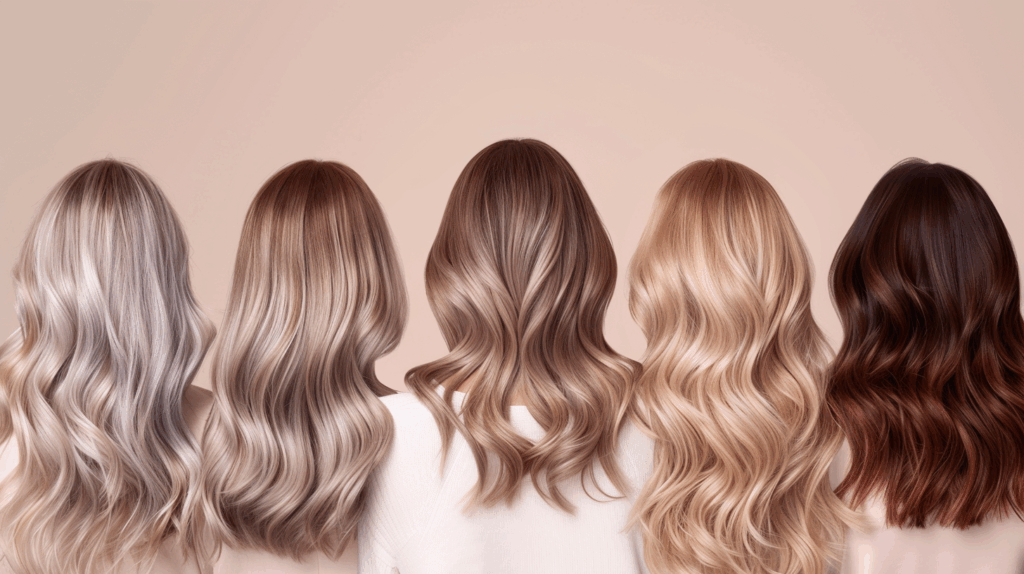
Tape-In Extensions: Lightweight and Flat-Laying
Tape-in extensions are a game-changer for those with thin hair looking to add some volume and length without the bulkiness of traditional extensions. These extensions are known for being lightweight and lying flat against the natural hair, creating a seamless blend that looks incredibly natural.
If you’re worried about your thin hair not being able to handle extensions, tape-ins could be the perfect solution for you. One of the key benefits of tape-in extensions is their versatility.
They can be applied in various ways to suit your individual needs and preferences. Whether you have short hair or long locks, tape-ins can be customised to blend seamlessly with your natural hair length and texture.
Plus, they come in a wide range of shades and lengths, making it easy to find the perfect match for your hair colour and desired style. Before trying out micro ring hair extensions or other types of methods that might be too heavy for thin hair, consider tape-ins as a lightweight alternative that can provide the volume you desire without causing damage or discomfort.

Nano Ring Extensions: Tiny Bonds for a Seamless Look
Nano ring extensions are a fantastic option for those with very thin hair looking to add volume and length without causing damage. These tiny bonds are discreet and blend seamlessly with your natural hair, creating a flawless look that is virtually undetectable. The small size of the nano rings makes them ideal for women with thin hair who want to achieve a natural and subtle enhancement.
Before and after micro ring hair extensions, you’ll notice a significant difference in the thickness and fullness of your hair. Nano ring extensions are among the best types of hair extensions for fine hair because they are lightweight and non-damaging.
Unlike permanent hair extensions that can put strain on sparse hair, nano rings offer a gentle attachment method that won’t weigh down your delicate strands. With nano ring extensions, you can enjoy the benefits of added volume and length without worrying about damage to your natural hair.

Invisible Tape & Skin Wefts: The Latest in Undetectable Volume
When it comes to achieving undetectable volume for thin hair, invisible tape and skin wefts are the latest go-to options in the world of hair extensions. These innovative methods provide a seamless blend with your natural hair, making them virtually invisible to the naked eye.
Invisible tape extensions consist of thin, flexible panels of hair that are attached using a special adhesive. The result is a lightweight, flat-lying extension that adds natural-looking volume without causing any strain on delicate strands.
Similarly, skin wefts are ultra-thin extensions that mimic the look of hair growing directly from the scalp. They are applied using a gentle adhesive strip that lies flat against the head for a discreet and comfortable fit.
Unlike traditional clip-ins or bulky weaves, invisible tape and skin weft extensions offer a more natural and subtle enhancement for those with thin or fine hair. These types of extensions are perfect for women seeking to add thickness and volume without compromising the health of their natural strands.
Whether you’re looking to achieve long, flowing locks or simply enhance your existing style, invisible tape and skin wefts provide a versatile solution that can be customised to match your unique hair texture and colour seamlessly. With proper care and maintenance, these innovative extensions can be worn regularly without damaging your delicate hair follicles, making them an excellent choice for those looking to enhance their look with confidence.

Why Fusion and Bonded Extensions Might Not Be Ideal
When considering hair extensions for thin hair, it’s essential to understand why fusion and bonded extensions might not be the ideal choice. These types of hair extensions methods involve attaching individual hair extensions directly to your natural strands using adhesive or heat.
While they can provide length and volume, they may not be the best option for thin hair due to the potential damage they can cause. One common concern with fusion and bonded extensions is that the application process can put strain on already delicate strands, leading to breakage and thinning over time.
The heat or glue used to attach these extensions can weaken the natural hair, especially if it is already fine or sparse. Additionally, when it comes time to remove these extensions, there is a risk of further damage as the bonds are broken down and separated from your own hair.
This can result in breakage and potential loss of volume, which is particularly concerning for those with very thin hair looking to maintain their natural thickness. For those with fine thin hair looking for a less damaging alternative, exploring options such as invisible hair extensions for thin hair or tape-in extensions may be more suitable.
These types of extensions are designed to be lightweight and gentle on delicate strands, reducing the risk of damage both during application and removal. By choosing extensions that cater specifically to thin or fine hair types, you can achieve your desired look without compromising the health of your natural locks.
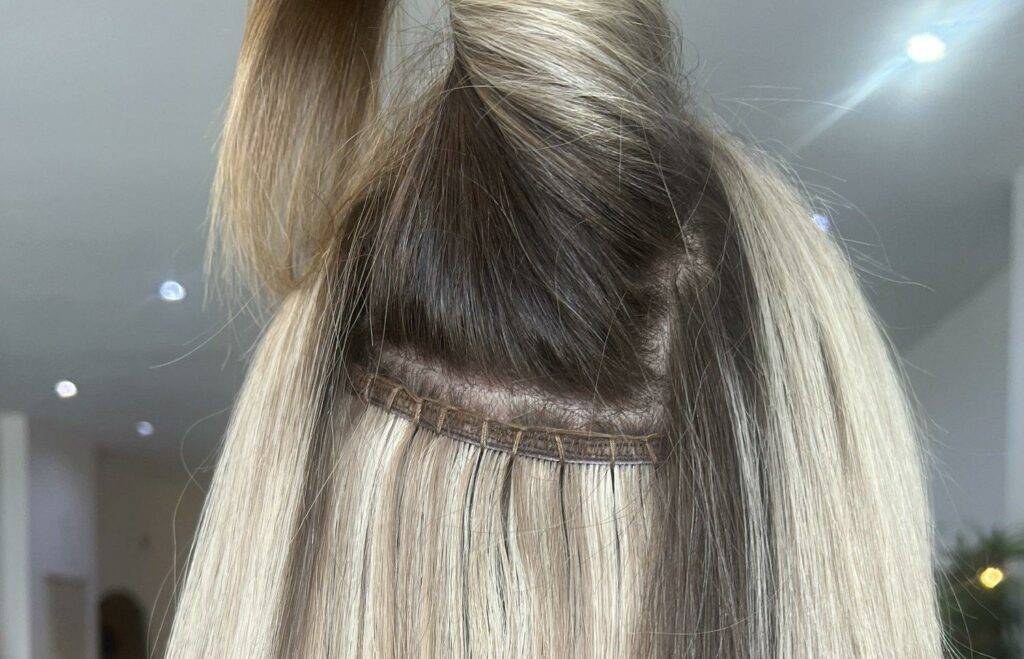
Risks of Weave and Sew-In Extensions on Delicate Hair
Weave and sew-in extensions can be risky for those with delicate or thin hair, as the weight of the wefts can put strain on already fragile strands. The weaving process involves tightly braiding sections of your natural hair before sewing the extensions onto the braids.
This constant tension and pulling can lead to breakage and damage, especially for those with very thin hair. Additionally, the bulky nature of weave extensions may make them more visible on sparse areas of the scalp, which could defeat the purpose of adding volume and thickness.
Another concern with weave and sew-in extensions for thin or delicate hair is the potential for irritation and discomfort. The tight braids used to anchor the wefts in place can pull on the scalp, causing pain and even leading to traction alopecia in severe cases.
For individuals with very thin or fragile hair, this added stress on already compromised follicles can further weaken them over time. It’s essential to consider these risks when choosing extension methods for thin hair, as maintaining scalp health is crucial for long-term hair growth and overall well-being.

Are Micro Rings Too Harsh for Fine Hair
Micro ring hair extensions are a popular choice for many individuals looking to add length and volume to their hair, but are they too harsh for fine hair? The answer depends on a variety of factors, including the thickness and strength of your natural hair, as well as how well the extensions are applied. Micro ring extensions involve attaching individual strands of extension hair to small sections of your own hair using tiny metal rings.
While this method can be gentle on thicker hair textures, it may put additional strain on fine or delicate strands. If your natural hair is prone to breakage or damage, micro ring extensions could exacerbate these issues.
Before committing to micro ring extensions for thin hair, it’s crucial to consult with a professional stylist who has experience working with fine hair textures. They can assess the condition of your natural hair and recommend the most suitable extension method that minimises damage and maximises comfort.
Additionally, opting for high-quality human hair extensions that closely match your own texture and colour can help create a seamless blend that looks and feels natural. When applied correctly by a skilled stylist, micro ring extensions can provide added fullness without weighing down fine strands or causing unnecessary stress on the scalp.
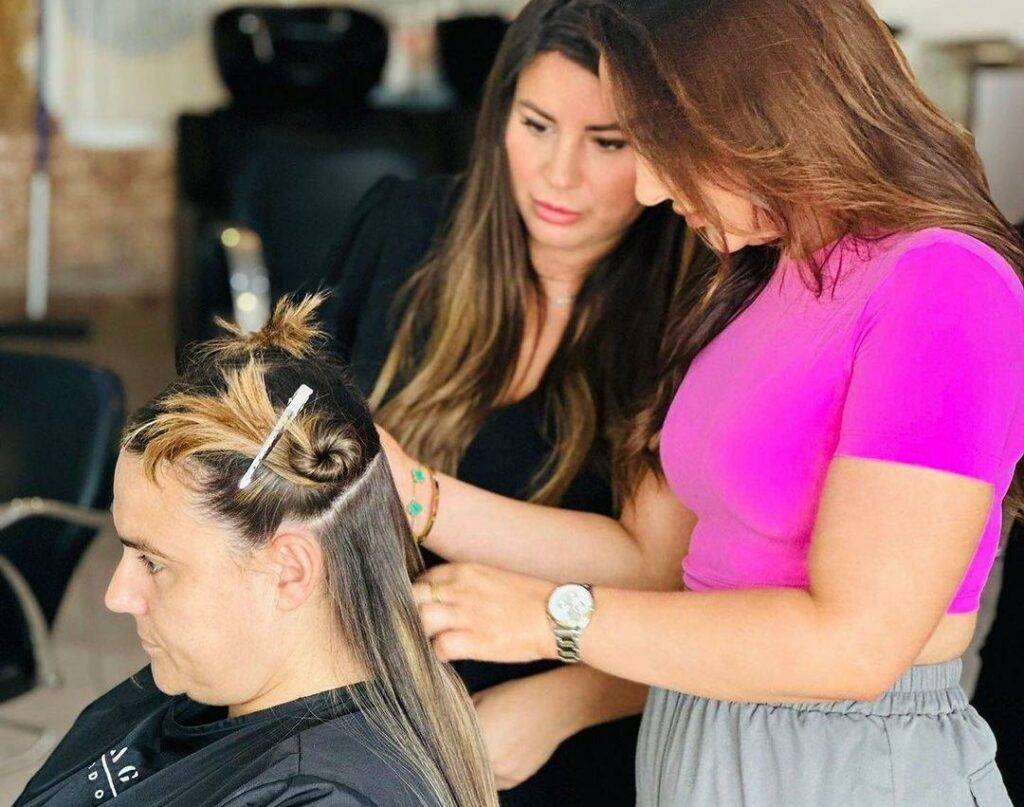
Placement Tips to Avoid Visibility
When it comes to getting hair extensions for thin or fine hair, placement is key to achieving a natural and seamless look. To avoid visibility of the extensions, it’s essential to work with a skilled stylist who understands how to strategically place them for maximum blendability.
One important tip is to ensure that the extensions are placed closer to the root rather than towards the ends of your hair. This helps create a more natural transition and prevents the extensions from peeking through sparse areas.
Additionally, consider where your natural hair parts and falls when styling. Placing extensions along these natural lines can help camouflage them and make them less noticeable.
Another placement tip is to avoid placing extensions too close to the hairline or on very thin sections of hair, as this can increase visibility and make it evident that you are wearing extensions. By strategically placing the extensions throughout your hair and paying attention to where they blend seamlessly with your natural strands, you can achieve a fuller look without anyone knowing you’re wearing them.

Creating Volume Without Overloading the Scalp
When it comes to creating volume without overloading the scalp with hair extensions for thin hair, it’s all about strategic placement and layering. Sparse hair can benefit from extensions that are strategically placed to add volume where needed most. Best human hair extensions UK offer a natural look and feel, blending seamlessly with your own hair for a fuller appearance.
By layering the extensions throughout your hair, you can achieve a more natural and balanced volume without causing strain on your scalp. Before and after micro ring hair extensions application can show a dramatic transformation in thin or fine hair.
Good hair extensions should enhance your natural beauty without causing damage to your own strands. It’s essential to work with individual hair extensions that are lightweight and suitable for thin hair types.
The best human hair extensions for thin hair will provide the desired volume while maintaining the health of your natural strands. By choosing quality extensions that are designed specifically for thin or fine hair, you can achieve the fullness you desire without risking damage to your delicate strands.

Layering & Cutting Techniques for Natural Results
When it comes to achieving a natural look with hair extensions for thinning hair, proper layering and cutting techniques are crucial. This is where the magic really happens, seamlessly blending your natural hair with the extensions for a flawless finish. To start, your stylist will strategically layer the extensions into your own hair, ensuring that there are no harsh lines or obvious distinctions between the two.
By incorporating layers that match your natural hair’s length and texture, the extensions will integrate seamlessly, adding volume and thickness without looking artificial. Short hair extensions for thin hair can be particularly challenging to blend effectively, but with the proper cutting techniques, it can be done beautifully.
Your stylist may opt for feathering or texturising methods to help marry your short strands with the longer extensions. This creates a cohesive look that flows naturally and enhances your overall hairstyle.
By strategically trimming and shaping both your natural hair and the extensions, you can achieve a stunning transformation that breathes new life into your locks. Good communication with your stylist is key here; make sure to express your desired outcome so they can tailor their cutting techniques specifically to suit you.

Washing and Brushing Thin Hair with Extensions
When it comes to washing and brushing thin hair with extensions, gentle care is key to maintaining both the natural hair and the added extensions. Before and after hair extensions for thin hair on top, it’s essential to adjust your washing routine to ensure longevity and prevent damage.
Use a sulfate-free shampoo and conditioner that is gentle on both your natural strands and the extensions. Be sure to wash your hair in a downward motion to avoid tangling or pulling on the bonds of the extensions.
When rinsing, be thorough but gentle to ensure all product residue is removed without causing unnecessary stress on the fine, thin hair. After washing, it’s crucial to brush your hair properly to avoid tugging or pulling on the delicate strands.
The best type of brush for fine, thin hair extensions before and after is a soft-bristle brush or a loop brush specifically designed for use with extensions. Start at the ends of your hair and work your way up towards the roots in small sections, gently detangling any knots without putting too much pressure on the bonds.
Avoid brushing vigorously or using heated styling tools directly on the bonds, as this can cause damage not only to the extensions but also to your natural hair. By taking these precautions when washing and brushing, you can maintain healthy, beautiful hair even with added extensions for volume and length.

Products to Use (and Avoid) for Long-Lasting Wear
When it comes to thin hair, choosing the right products can make a significant difference in the longevity and overall health of your hair extensions. Opt for lightweight, sulfate-free shampoos and conditioners that won’t weigh down very thin hair or cause additional damage. Look for products specifically designed for fine thin hair extensions before and after application to ensure they remain soft, shiny, and tangle-free.
Avoid heavy styling products such as waxes, gels, or serums that can build up on the extensions and make them appear greasy or dull. Instead, opt for lightweight styling mousses or sprays that provide hold without adding extra weight to your strands.
When it comes to brushing your hair with extensions, use a gentle detangling brush or wide-tooth comb to prevent breakage and maintain the integrity of both your natural hair and the added individual hair extensions. Remember, taking care of your hair with the best type of hair extensions for thin hair will keep them looking fabulous before and after installation!

Signs Your Extensions Are Too Heavy
If you’re starting to feel like your hair extensions are weighing you down, it might be a sign that they’re too heavy for your thin strands. One of the most common indicators that your extensions are causing strain is increased scalp sensitivity and discomfort.
Your scalp might feel tender or sore, especially when styling or securing the extensions. Additionally, your natural hair is starting to break or shed more than usual, which could be a result of the added weight pulling on your delicate strands.
It’s essential to listen to your hair and body if you start experiencing these symptoms, as continuing to wear heavy extensions can lead to further damage and thinning. Another telltale sign that your hair extensions are too heavy is difficulty maintaining volume at the roots.
If you find that no matter what styling techniques or products you use, your hair appears flat and limp near the scalp, it could be due to the excess weight of the extensions pulling down on your natural hair. This lack of volume can make it challenging to achieve a seamless blend between your real hair and the extensions, resulting in an unnatural look.
Furthermore, heavy extensions can put strain on your hair follicles and lead to traction alopecia over time if not addressed promptly. If you notice any of these signs, consider lighter extension options or give your hair a break from wearing them altogether to prevent further damage and promote healthy regrowth.

Scalp Sensitivity and How to Reduce Tension
Scalp Sensitivity and How to Reduce Tension When it comes to wearing hair extensions, especially for those with thin or delicate hair, scalp sensitivity can be a common concern. The added weight and tension from the extensions can sometimes lead to discomfort or irritation on the scalp.
To reduce tension and minimise any discomfort, it’s essential to choose lightweight extensions that won’t pull on your roots excessively. Opting for the best, highest-quality human hair extensions in the UK from reputable brands like Image London Hair Extensions can make a significant difference in how comfortable they feel on your scalp.
Additionally, make sure that the attachment method used is gentle and suitable for fine hair to avoid unnecessary strain. One effective way to reduce tension on the scalp when wearing hair extensions is by ensuring proper placement of the extensions.
The position where the wefts or bonds are attached plays a crucial role in how evenly the weight is distributed across your head. For individuals with very thin hair, it’s recommended to avoid placing extensions too close to the hairline or in areas where the hair is sparse.
By strategically positioning the extensions and spacing them out appropriately, you can help alleviate any pulling or discomfort on your scalp. Regularly checking in with your hairstylist for maintenance and adjustments can also prevent excessive tension build-up over time and ensure that your natural hair remains healthy even while wearing extensions.
Can You Use Extensions with Alopecia or Telogen Effluvium
Hair extensions can be a game-changer for those dealing with hair loss conditions like alopecia or telogen effluvium. These extensions can provide added volume and fullness, helping to conceal thinning areas and boost confidence.
However, it’s crucial to approach the use of extensions with care and consideration when dealing with such conditions. When selecting hair extensions for thin hair caused by alopecia or telogen effluvium, it’s essential to opt for the least damaging options available.
Look for lightweight extensions that won’t put unnecessary strain on your delicate strands. Tape-in or V Light extensions are often recommended as they distribute weight evenly across the scalp, reducing the risk of further damage.
Additionally, choosing high-quality human hair extensions can help blend seamlessly with your natural hair texture, providing a natural look that enhances thickness without causing harm. It’s essential to consult with a professional stylist experienced in working with women with thin hair to ensure the best type of hair extensions is selected for your specific needs.
They can assess your unique situation and recommend the most suitable extension type and placement technique to achieve desired results while prioritising the health of your natural hair. By taking a cautious approach and working closely with a knowledgeable stylist, you can enjoy the benefits of added volume and thickness without compromising the well-being of your fine strands.

FAQs
Consultation Tips for Clients with Thin Hair
When it comes to consulting with clients who have thin hair, it’s crucial to approach the conversation with sensitivity and understanding. Begin by listening attentively to their concerns and desires regarding their hair. Ask open-ended questions to get a clear picture of what they hope to achieve with extensions for thin hair.
Discuss their lifestyle and daily routine to determine the best type of hair extensions that will suit their needs while maintaining the health of their natural strands. Educate your clients on the different options available when it comes to selecting the best hair extensions for thin hair.
Explain the benefits of each type, such as tape-in extensions for volume or V Light extensions for a damage-free solution. Show before and after examples of clients with similar thin hair who have successfully used extensions to add thickness and fullness.
Address any concerns they may have about potential damage or maintenance requirements, reassuring them that with proper care and professional application, extensions can enhance their natural beauty without harming their delicate strands. Consultation Tips for Clients with Thin Hair.
When consulting with clients who have fine or thinning hair, it’s essential to take a personalised approach tailored specifically to their unique needs. Begin by assessing the current condition of their hair, including thickness, texture, and any areas of concern such as bald spots or breakage.
Understanding the client’s natural hair characteristics will help you recommend the most suitable extension methods that will blend seamlessly for a natural look. Next, discuss your client’s desired outcome in detail.
Whether they are looking to add volume, length, or both, understanding their goals will guide you in recommending the best type of hair extensions for thin hair that will meet their expectations while preserving the health of their natural strands. Consider factors such as lifestyle, budget, maintenance preferences, and styling habits when making recommendations.
Provide your clients with information on proper care routines and maintenance tips for maintaining healthy hair while wearing extensions. Emphasise the importance of regular follow-up appointments for adjustments and upkeep to ensure long-lasting results without causing damage or stress on already delicate strands.
Conclusion: Embrace Fuller Hair with Confidence
Embrace Fuller Hair with Confidence: As you journey through the world of hair extensions for thin hair, remember that these beauty tools are here to enhance your natural locks and boost your confidence.
By choosing the correct type of extensions and following the recommended care routine, you can achieve the fullness and volume you desire without compromising the health of your precious strands. Embrace this opportunity to experiment with different styles, lengths, and textures that you may have never thought possible with your thin hair.
Discovering how hair extensions work can open up a whole new realm of possibilities for those with thinning or fine hair. The process of adding extra strands seamlessly to your own can be empowering and transformative, giving you a newfound sense of self-assuredness.
With options like tape-in extensions or V Light extensions for thin hair available, there is a solution out there that will cater to your specific needs and preferences. Say goodbye to worries about damage after extensions are taken out – opt for the least damaging hair extensions for fine hair and relish in the beauty they bring.
Never doubt the power of good-quality hair pieces or very thin hair solutions when it comes to transforming your look. Thin-haired women everywhere can now rejoice in having access to top-notch products like Image London Hair Extensions or other reputable brands offering some of the best human hair extensions in the UK market.
Whether you’re looking for short hair extensions for thin strands or simply seeking ways to add more oomph to your style, trust in the variety of options available that cater specifically to those with fine, thin locks. Remember: With the right tools and knowledge at hand, anyone can achieve their dream hairstyle with grace and confidence!
FAQs
The best types are lightweight and non-damaging, like tape-ins, nano rings, and halo extensions. These are gentle on delicate strands and blend seamlessly with fine textures. Learn more about our extensions for thinning hair.
Yes—when professionally applied. We recommend avoiding glue-in or fusion methods. Tape-ins, nano rings, and halos offer discreet volume without harming fragile strands. See our full service list for options.
Not if they’re installed and maintained correctly. We only use methods suited for thin hair. Avoiding overuse of heat and using proper aftercare products is key.
Invisible tape and skin wefts are currently the most undetectable, lying flat against the scalp and mimicking natural growth. They’re ideal for those concerned about extension visibility.
In many cases, yes. Tape-ins or halos are often safe if placed carefully. We recommend a personalised consultation to find a method that’s safe and effective for your condition.


